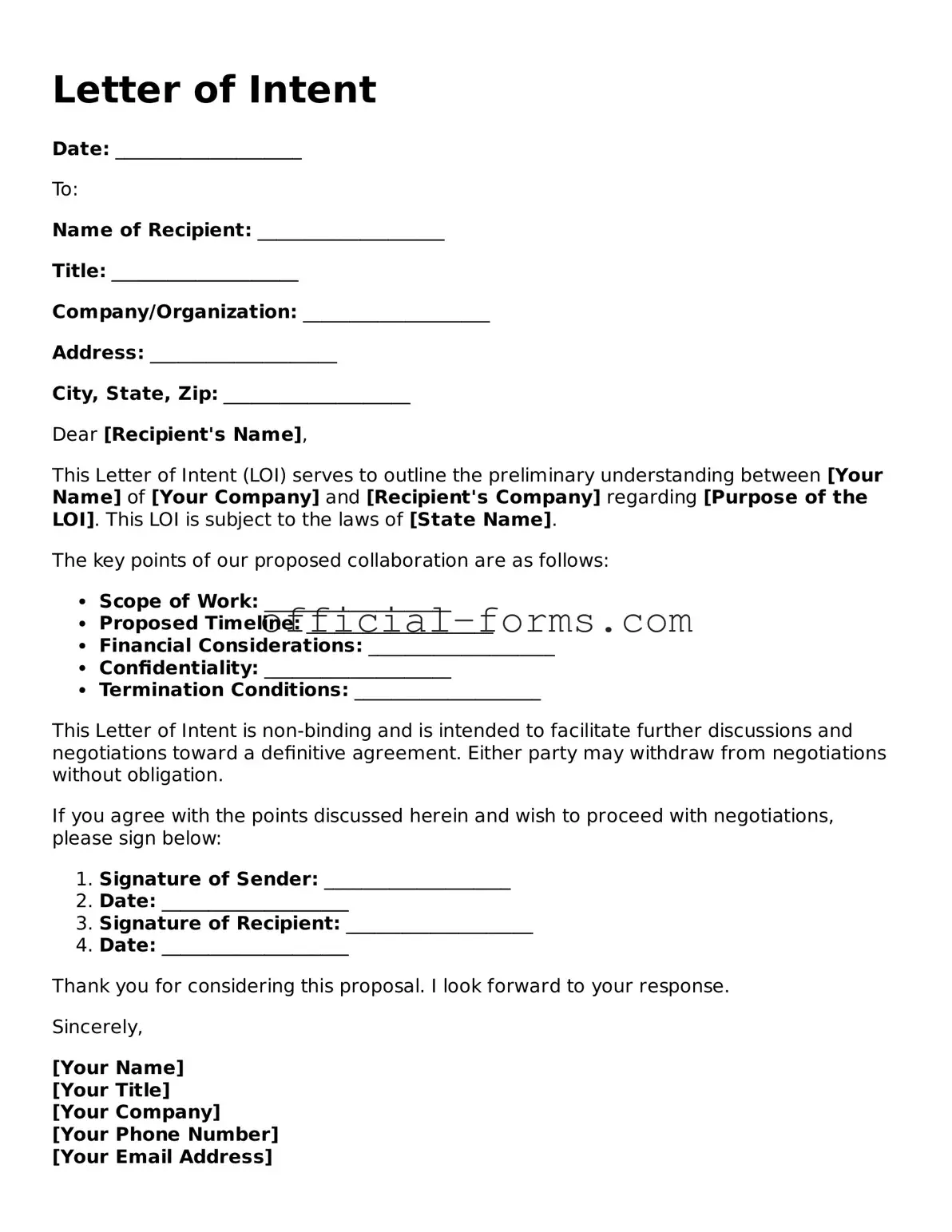Filling out a Letter of Intent (LOI) can seem straightforward, but many individuals make common mistakes that can lead to confusion or complications down the line. Understanding these pitfalls can help ensure that your LOI accurately reflects your intentions and needs.
One frequent mistake is failing to clearly define the purpose of the letter. An LOI should explicitly state what you intend to achieve. Whether it’s for a business proposal, educational opportunity, or any other purpose, clarity is key. If the purpose is vague, the recipient may misinterpret your intentions, leading to misunderstandings.
Another common error is neglecting to include essential details. Important information such as dates, names, and specific terms should be included. Omitting these details can create ambiguity. For instance, if you’re proposing a partnership, specify the roles and responsibilities of each party. This helps establish a clear foundation for future discussions.
Some people also make the mistake of using overly complex language. While it’s important to maintain a professional tone, using jargon or convoluted sentences can alienate the reader. Aim for straightforward language that conveys your message effectively. A well-written LOI should be accessible to anyone reading it, regardless of their background.
Additionally, failing to proofread is a common oversight. Typos and grammatical errors can detract from the professionalism of your letter. Taking the time to review your document can prevent these mistakes. It’s often helpful to read the letter aloud or have someone else review it for clarity and accuracy.
Another mistake is not addressing the recipient properly. Using the correct title and name shows respect and attention to detail. An incorrectly addressed letter can set a negative tone from the start. Make sure to double-check the recipient’s name and title before sending your LOI.
Lastly, forgetting to include a call to action can leave the recipient unsure of the next steps. Whether you want them to schedule a meeting or provide feedback, make your request clear. A well-structured LOI encourages engagement and paves the way for further communication.
